Are you feeling overwhelmed by the thought of university tuition fees? You're not aloneâmany students face the challenge of financing their education and finding a manageable payment plan. Luckily, crafting a clear and concise letter to your university's financial office can pave the way for those options to become available. Ready to learn how to create an effective letter that can ease your financial stress? Let's dive in!

Personal Information
Crafting a detailed payment plan for university tuition fees requires careful organization of personal information. Key components include student full name, typically formatted as First Middle Last to ensure accurate identification. Next, student identification number (often a unique code assigned by the university) is crucial for administrative processes. Address details, featuring street number, street name, city, zip code, and country, provide a clear location for correspondence. Contact information includes cellphone number and email address for immediate communication regarding any payment-related updates. Additionally, date of birth often aids in verifying student identity. Finally, enrollment status, such as undergraduate or graduate, specifies the level of education pursued, which can influence the payment plan options available.
Reason for Request
Students seeking a tuition fee payment plan may experience financial constraints due to various reasons like unexpected medical expenses, job loss, or family emergencies impacting their income stability. A formal request for a payment plan often highlights specific circumstances such as rising living costs in urban areas like New York City or the effects of inflation on personal budgets, which can hinder the ability to pay lump-sum tuition fees. By outlining financial hardships, students can demonstrate the necessity for a flexible payment structure that allows them to manage expenses while pursuing their education at universities, such as Harvard or Stanford, which can range from $50,000 to over $70,000 annually. Addressing these challenges respectfully and clearly conveys the urgency of the request, fostering a better understanding between students and university financial aid offices.
Proposed Payment Schedule
As part of a proposed payment schedule for university tuition fees, students can opt for manageable installments spread over the academic year. Tuition fees, which can average between $10,000 to $50,000 depending on the institution and program, can be broken down into monthly payments. For instance, a $20,000 annual tuition fee could be divided into ten monthly payments of $2,000, allowing students to ease their financial burden. Payment deadlines could coincide with semester start dates, such as September and January, ensuring funds are available when needed. Additional options may include a deferred payment plan, providing flexibility for students facing unexpected financial challenges. Academic institutions may also offer discounts for early payments or incentives for responsible payment history, fostering a culture of fiscal responsibility among students.
Financial Documentation
Creating a financial documentation plan for university tuition fee payment involves outlining key components effectively. Financial documentation often necessitates detailed student identification, such as the university student ID number and full name for clarity. The payment plan should specify the academic semester, for example, Fall 2023 or Spring 2024, while mentioning the total tuition fees, inclusive of mandatory fees, like transportation and activity fees. Additionally, it is essential to consider the number of installments for payment, for instance, a typical option may be a five-month installment plan for accessibility. Note any pertinent dates, such as the due date for the first payment, typically aligned with the semester start date. Highlight available financial aid or scholarships that may offset tuition, like the Pell Grant, while including the contact information for the financial office at the university for any queries. Ensure clear communication regarding late fees, which usually amount to a percentage of the unpaid balance.
Contact Information for Follow-up
University tuition fee payment plans offer flexibility for students managing their educational expenses. These plans typically include several options such as monthly installments spread over the academic year (up to twelve months), allowing students to budget effectively. Institutions often provide an online portal for enrollment, ensuring easy access to payment schedules and deadlines. Students must contact the financial aid office for specific guidelines and applications, which are generally due within the first month of the semester, ensuring compliance with university policies. Additionally, maintaining up-to-date contact information is crucial for timely communication regarding account balances and fee adjustments.
Letter Template For University Tuition Fee Payment Plan Samples
Letter template of installment payment request for university tuition fees
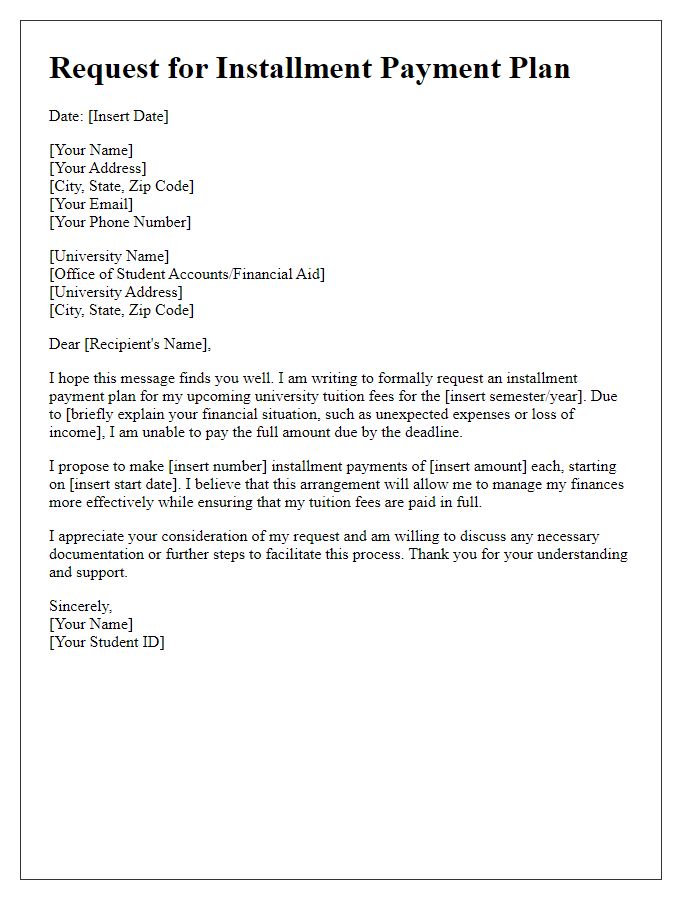
Letter template of deferred tuition payment arrangement for enrolled students
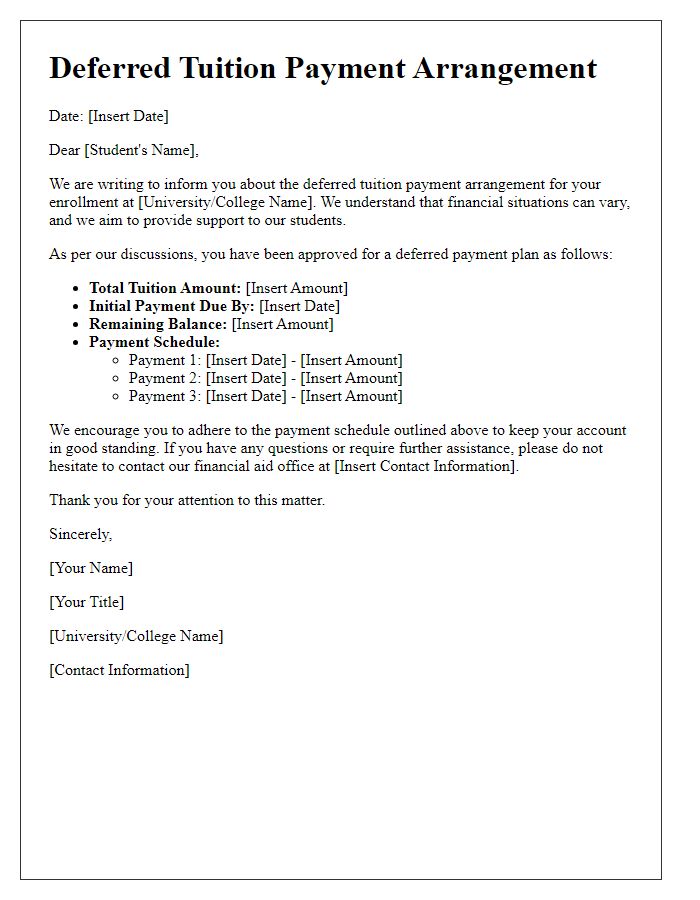

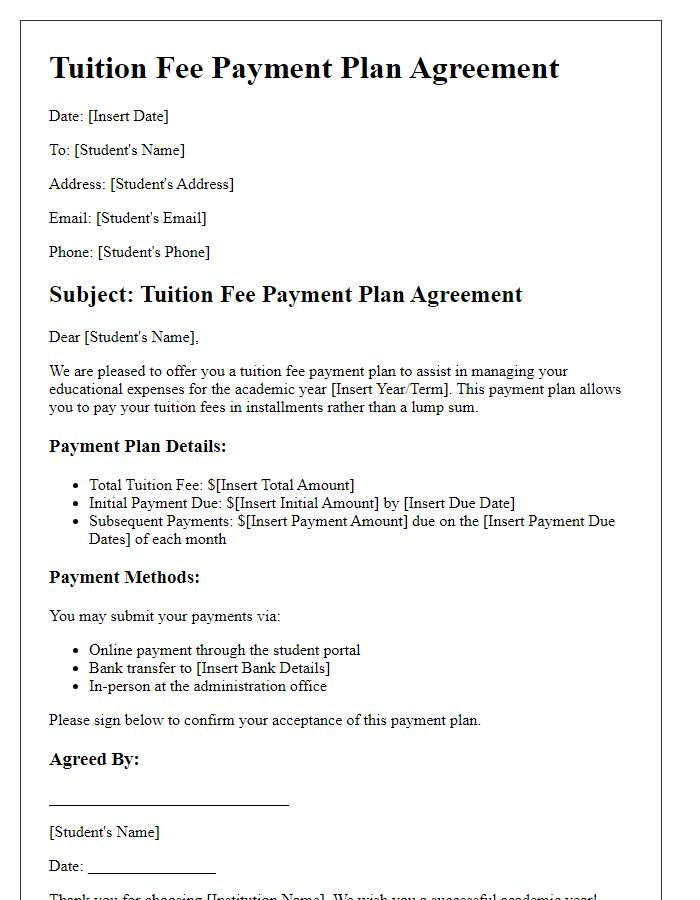
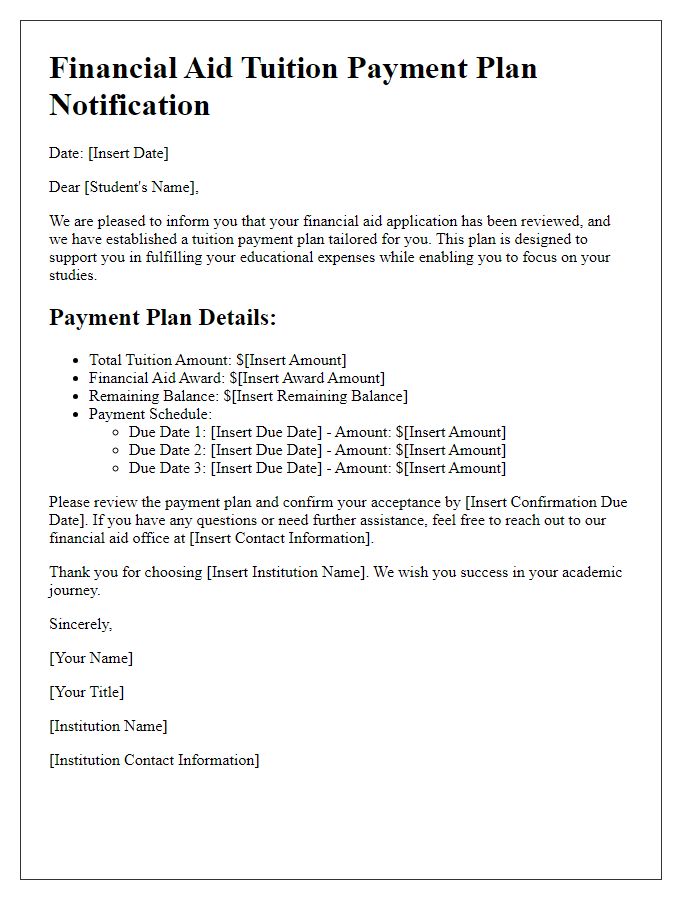
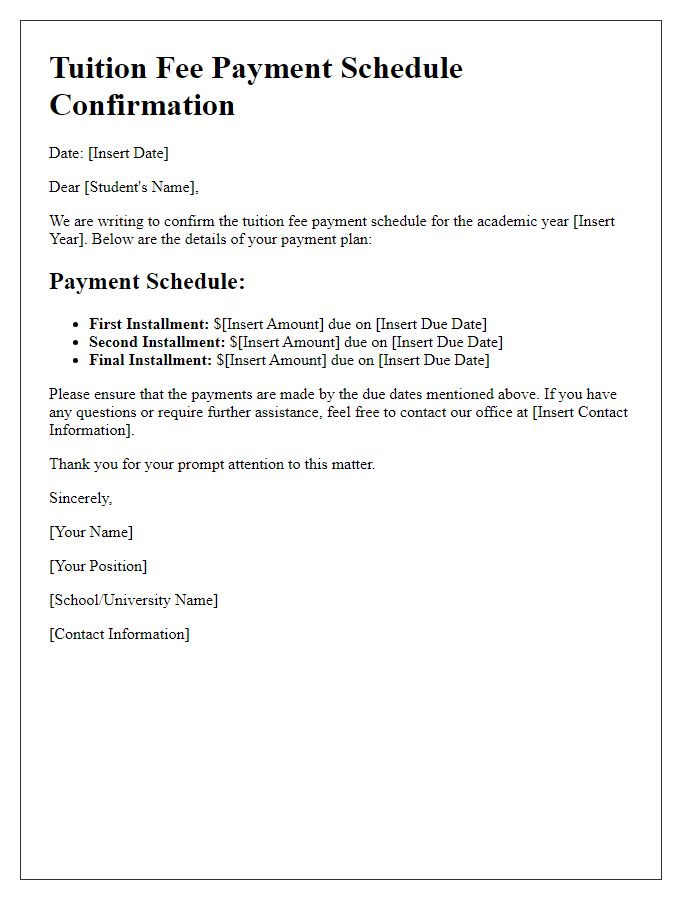
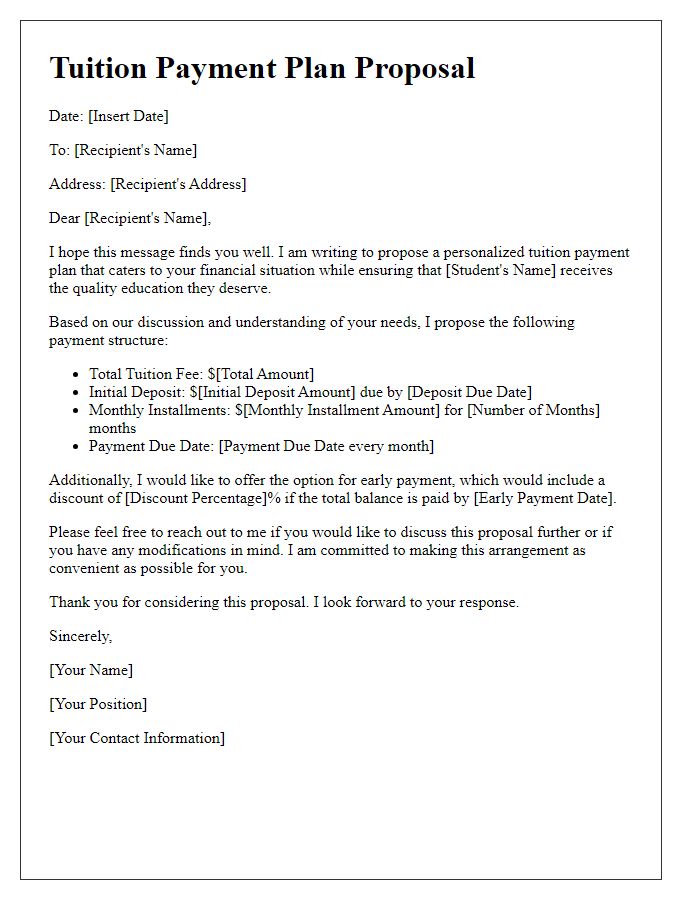
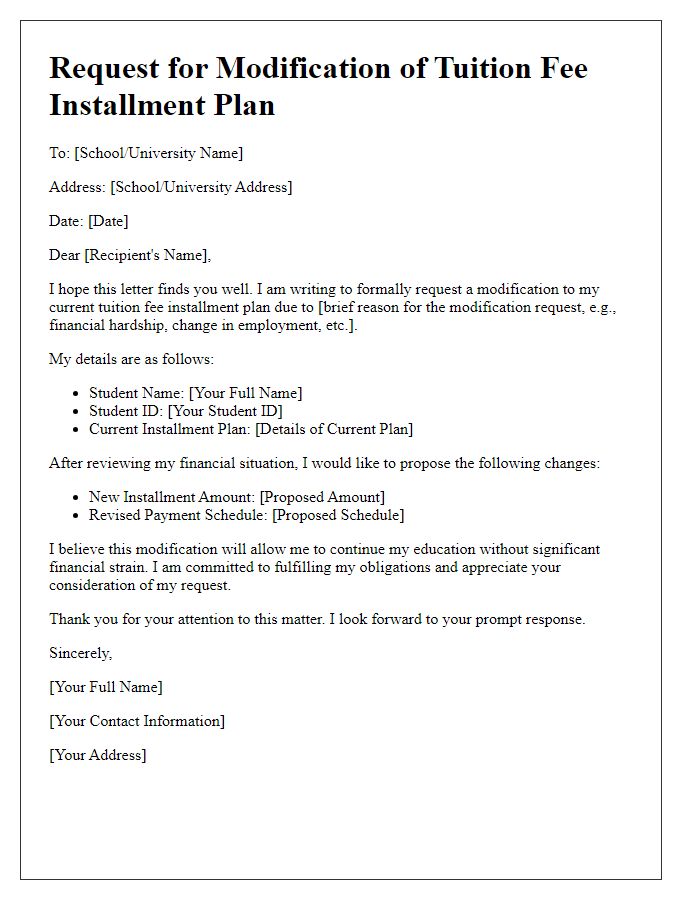
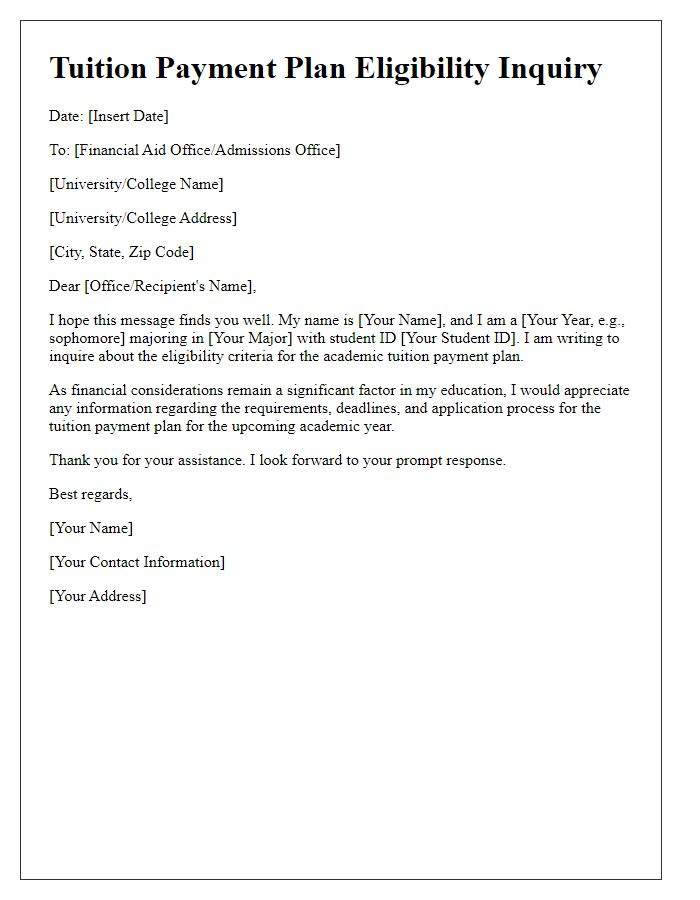

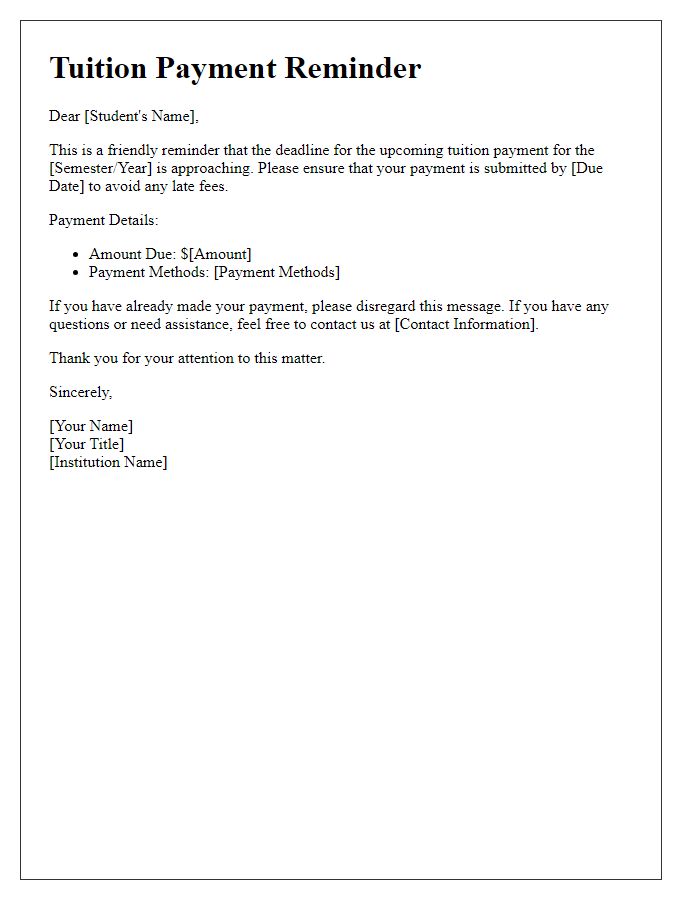


Comments